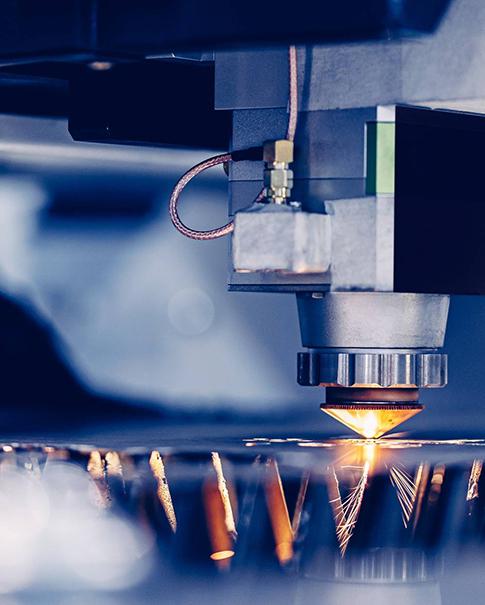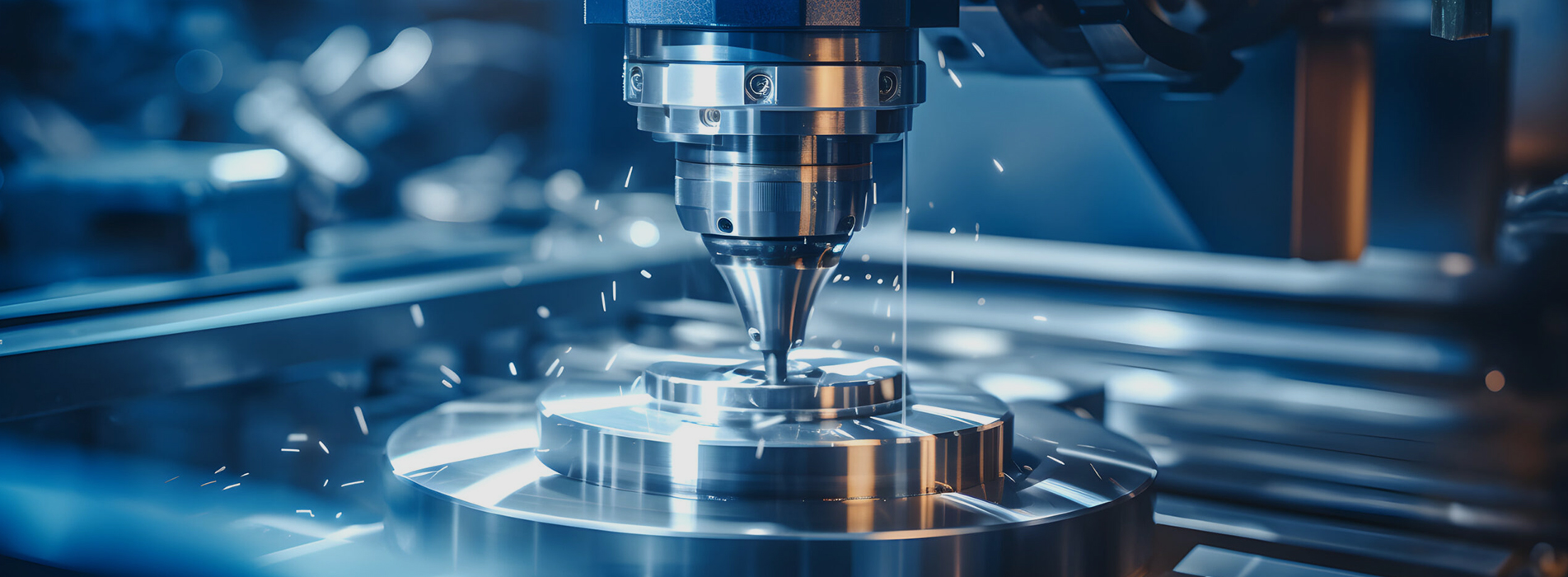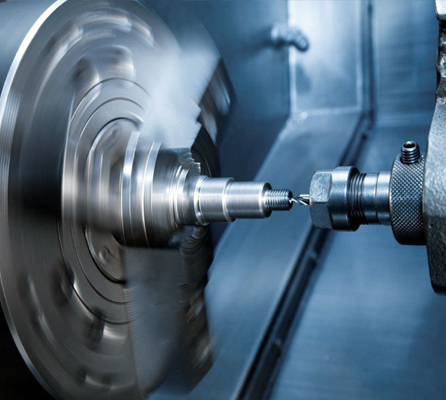CNC Coolant Explained: Types, Maintenance & Safety
Sep 30, 2025
Coolant isn't just some liquid splashing around your CNC machine, it's the difference between a clean, accurate cut and a scrapped part. In machining, CNC coolant, whether it's a cutting fluid, mist, or specialized lubricant, keeps heat under control, extends tool life, and makes chips easier to clear. A common misconception? People assume coolant's only job is cooling. In reality, it does much more: lubricating the tool, flushing chips away, and even improving surface finish. Skip the right coolant and you're not just risking temperature spikes, you're risking geometry, part clarity, and operator safety.
Choosing the right coolant for CNC machines isn't just a technical detail, it affects precision, part quality, operator safety, and overall project cost. The wrong choice can mean burned edges, dull tools, and constant downtime.
At Keso, we don't just talk theory, our machinists run coolant setups daily, and this guide pulls directly from their shop-floor experience. Whether you're cutting aluminum, steel, or plastics, these insights will help you understand how coolant really impacts the machining process.
Types of CNC Machine Coolant & Their Uses
(Istock)
Not all cnc machine coolants are created equal, and machinists often have strong opinions about which ones actually work in the real world. The choice comes down to balancing cooling vs. lubrication and picking the right blend for your material.
Water-Based vs. Oil-Based Coolants
Type
Strengths
Weaknesses
Best For
Water-Based
Excellent cooling, chip flushing, less expensive
Lower lubrication, risk of rust if mismanaged
Aluminum, plastics, general machining
Oil-Based
Superior lubrication, protects tool edges
Poor cooling, can smoke at high speeds
Steel, titanium, heavy-duty cutting
Synthetic, Semi-Synthetic & Neat Oil Options
Synthetic Coolants —> Fully water-based, no oil. Great for heat control and visibility, but less lubricating.
Semi-Synthetic Coolants —> A blend of water and oil. A “middle ground” option that works across most shop setups.
Neat Oils (Straight Oils) —> 100% oil, unbeatable for tool life and surface finish on tough metals, but messy and expensive to manage.
What Machinists Say
On machining forums and shop floors, you'll hear a lot of loyalty to in aerospace shops for stability). Preferences vary, but the theme is clear: pick a coolant that matches ur workload, not just your budget.
In high-sped machining, coolant choice isn't just about keeping tools cool, it determines whether you get a clean finish or rapid tool wear.
How Often Should You Change CNC Coolant?
(Istock)
There's no single clock for coolant changes, it depends on your shop size, material mix, and how often the machines run.
High-volume production shops usually refresh or cycle coolant every 6–12 weeks, since the mix degrades faster with nonstop use.
Medium-sized job shops can often stretch to 3–6 months if they stay on top of filtration and monitoring.
Low-volume or prototyping shops sometimes run the same coolant for 6–12 months, but only if it’s properly maintained.
Signs Your Coolant is Due for a Change
That rancid, sour smell that makes machinists gag, it's bacterial growth.
Sludge or oily residue floating on the surface.
A visible “bloom” (foaming or cloudiness) from unchecked bacteria.
Tools are dulling faster than usual, or parts are coming out with a poor surface finish.
What Our Engineers Recommend
Our machinists keep coolant healthy with simple habits:
Aeration to keep oxygen flowing and bacteria down.
Filtration systems that catch fine chips and tramp oil.
Mixing with RO/DI water instead of tap water to avoid mineral buildup.
If you don't have time to babysit your coolant, don't sweat it. Many shops simply outsource their CNC machining to services like Keso, where maintenance, monitoring, and machine prep are already baked into the process.
Coolant System Maintenance: Filters & Nozzles
(Istock)
A CNC coolant system is only as good as its weakest link. Even the highest-grade fluid won't perform if your filters, nozzles, or pumps are neglected. Proper upkeep not only extends coolant life but also prevents tool wear, surface finish issues, and costly downtime.
Choosing the Right CNC Coolant Filter Setup
Filters protect your pump and nozzles from chips, fines, and tramp oil. The right setup depends on the material you cut and the machine's duty cycle:
Bag filters: Affordable and effective for light-to-medium chip loads.
Cyclone separators: Great for high-volume shops dealing with fine particles.
Magnetic filters: Essential if you're machining ferrous materials.
Many shops combine these for layered protection, ensuring both large chips and micro fines are captured before they reach critical parts of the system.
Importance of Nozzle Placement & Types
Coolant delivery is an art. Nozzles must hit the tool's cutting edge precisely, too far off, and you're just flooding the work area without effect. Popular choices include:
Loc-Line mods: Flexible, low-cost, and easy to reposition.
High-pressure nozzles: Deliver deep penetration for drilling, tapping, and hardened materials.
Mist/fog nozzles: Useful when flood coolant is overkill but lubrication is still needed.
Dialing in nozzle direction can drastically improve chip evacuation and surface finish. Some machinists even experiment with 3D-printed nozzle mods for custom geometries.
Pump Health Tips
Your coolant pump is the heart of the system, and neglect here can lead to clogged impellers or even full pump failure. Key practices include:
Regular cleaning: Remove chip sludge and swarf buildup from the sump.
Inspect impellers: Damaged blades reduce flow and pressure, harming tool life.
Avoid sludge clog: Use baffles or chip guards to keep larger debris away from the pump intake.
When maintained correctly, a coolant system runs clean, efficient, and predictable, leaving you free to focus on cycle times and tolerances instead of emergency pump rebuilds.
Best Practices for CNC Machine Coolant & Lubricant Use
(Istock)
Coolant for cnc machines is a science of ratios, water quality, and discipline. Here's how to get it right:
Target Concentrate Levels: Most water-soluble coolants run best between 8–12%, but adjustments should be made per material. Aluminum often prefers the lower end for clean surfaces, while harder alloys may demand richer mixes for lubrication.
Use Deionized (DI) Water: Starting with RO or DI water keeps your sump cleaner, reduces mineral scaling, and extends coolant life significantly. Hard tap water may save time upfront but will cost you in deposits and premature breakdown.
Avoid Common Mistakes:
Overconcentration leads to sticky residues and tool fouling.
Cross-contamination (mixing brands or topping off with the wrong fluid) destabilizes emulsions.
Using the wrong coolant type for the job, such as neat oil where synthetic flood is required, can create smoke, mist, or outright tool failure.
In short, treat coolant like a consumable that deserves precision, not guesswork. Running it too lean or with poor filtration can accelerate edge wear and micro-chipping. For a deeper dive into spotting early warning signs, read our guide to tool wear detection and maintenance in CNC machining.
Health & Safety: Is CNC Coolant Dangerous?
(Istock)
CNC coolant keeps machines alive, but machinists know it comes with trade-offs. Prolonged exposure to coolant mist or skin contact can pose risks:
Mist & Inhalation: Continuous mist exposure may cause coughing, irritation, or long-term respiratory issues. Shops running high-pressure systems should consider mist collectors and powered respirators.
Skin Exposure: Dermatitis is common when gloves or barrier creams aren't used. Always protect your hands, especially with neat oils and older formulations.
Chemical Irritants: Some coolants contain biocides and stabilizers that, while effective, may cause reactions after long-term exposure.
Real-world machinist forums frequently share cautionary tales: “the sump cough,” chronic rashes, and oily film headaches. The takeaway is to invest in good ventilation, PPE, and sump hygiene, your lungs and skin will thank you.
Troubleshooting Common CNC Coolant Issues
(Istock)
At Keso, we've seen both sides. Som customers hand off their coolant headaches entirely, outsourcing disposal and top-off service saves them days of downtime per year. Others just consult us for optimized coolant recipes that extend sump life. Either way, expert input usually pays for itself. You can get yourself a free quote today for our CNC machining services because even the best coolant systems can go sideways but, here's what to do when things turn ugly:
Pump Overheats or Seizes: Usually a sludge buildup problem. Flush the sump, clean impellers, and consider adding better filtration before restart.
Separation or Staining: Emulsions that break down often mean hard water issues or brand incompatibility. Sometimes switching coolant brand works, but filtration and DI water usually solve the root cause.
Bacteria, Odor, and Film: The dreaded “rancid sump.” Fix with:Disk skimmers for tramp oil.Aeration systems to keep bacteria from thriving anaerobically.Scheduled sump cleaning before the bloom turns catastrophic.
Think of coolant care like machine care, neglect leads to stink, staining, and downtime.
When to Choose Professional CNC Coolant Services vs DIY
Coolant maintenance often falls into the “back-burner” category for busy shops. But deciding between in-house upkeep and outsourcing can be a strategic choice:
In-House DIY: Lower cost if you've got the manpower, but requires training, regular testing, and discipline. Miss a step, and the sump turns into a biohazard.
Professional Services: More expensive up front, but saves hours of downtime and ensures consistent coolant performance. Some providers handle safe disposal, filtration upgrades, and custom coolant blends.
Design Tips: Optimizing Coolant Flow & Nozzle Placement
Smart design goes a long way:
Nozzle Positioning: Always target the tool, chip interface. Multiple adjustable nozzles let you adapt to tool changes without resetting the entire setup.
Through-Spindle Coolant: Best for deep drilling and high-volume chip evacuation. While costly, it can double tool life in demanding operations.
High-Pressure vs Flood:
Flood coolant is cheap, reliable, and works well for general milling.
High-pressure systems shine in aerospace alloys and long-drill applications but come with higher pump maintenance.
A good rule of thumb? Watch the chips. If they're not clearing, your nozzle setup isn't doing its job.
















 SUBSCRIBE TO OUR NEWSLETTER
SUBSCRIBE TO OUR NEWSLETTER






